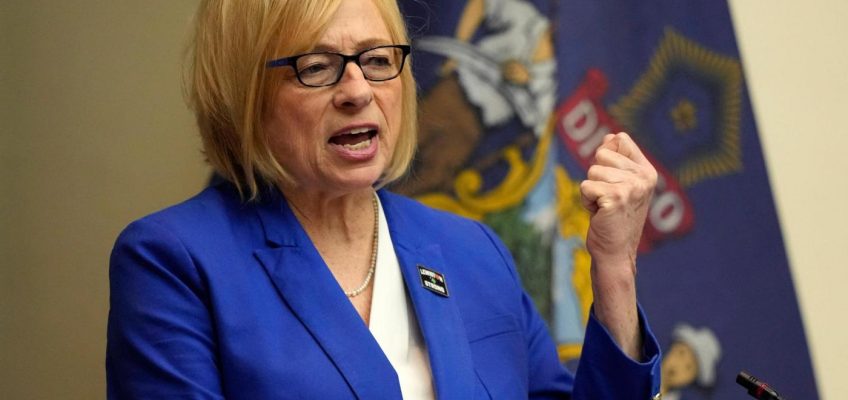By PATRICK WHITTLE
SCARBOROUGH, Maine (AP) — Maine officials sued the administration of President Donald Trump on Monday to try to stop the government from freezing federal money in the wake of a dispute over transgender athletes in sports.
Related Articles
Ohtani, Betts and World Series champion Dodgers visit Trump at the White House
Appeals court restores DOGE access to sensitive information at US agencies
Immigration crackdowns disrupt the caregiving industry. Families pay the price
Bogus report on tariff pause briefly lifted markets before White House denied it
No state has axed its income tax on wages in 45 years. Now 2 Southern states are on a path to do so
Trump and Maine, which is controlled by Democrats, are in the midst of a weeks long dispute about the Title IX anti-discrimination law and the participation of transgender students in high school sports. U.S. Secretary of Agriculture Brooke Rollins said earlier this month that the U.S. Department of Agriculture was pausing some funds for Maine educational programs because of what she described as Maine’s failure to comply with the Title IX law.
Maine Attorney General Aaron Frey filed a complaint in federal court on Monday that described the pause as “illegally withholding grant funds that go to keeping children fed.” The lawsuit seeks a temporary restraining order preventing the USDA from withholding money until a court is able to hear the case.
In a statement, Frey said, the president and his Cabinet “secretaries do not make the law and they are not above the law, and this action is necessary to remind the president that Maine will not be bullied into violating the law.”
The child nutrition program of the Maine Department of Education is unable to access several sources of funding at the moment because of the funding pause, Frey said. The money is used to feed children in schools, childcare centers and after-school programs and is also used to benefit disabled adults in congregate settings, he said.
The lawsuit states that the child nutrition program received or was due to receive more than $1.8 million for the current fiscal year. Prior year funds that were awarded but are currently inaccessible total more than $900,000, the lawsuit states. The lawsuit also says that the program was anticipating about $3 million that is typically awarded every July for summer meal program sponsor administration and meal reimbursement.
USDA officials did not return a request for comment.
Rollins said in a letter to Maine Gov. Janet Mills on April 2 that the state “cannot openly violate federal law against discrimination in education and expect federal funding to continue unabated.” The letter said the funding pause did not impact federal feeding programs.
“In order to continue to receive taxpayer dollars from USDA, the state of Maine must demonstrate compliance with Title IX’s protection of female student athletes from having to compete with or against or having to appear unclothed before males,” Rollins’ letter said.
Tensions between Maine and the Trump administration have simmered since February when Trump threatened to pull funding from Maine if the state does not comply with his executive order barring transgender athletes from sports. Mills, who was present at the White House for a meeting of governors, told the president: “We’ll see you in court.”
The Trump administration has vowed to cancel more federal funding if Maine does not bar transgender athletes from sports participation soon.




